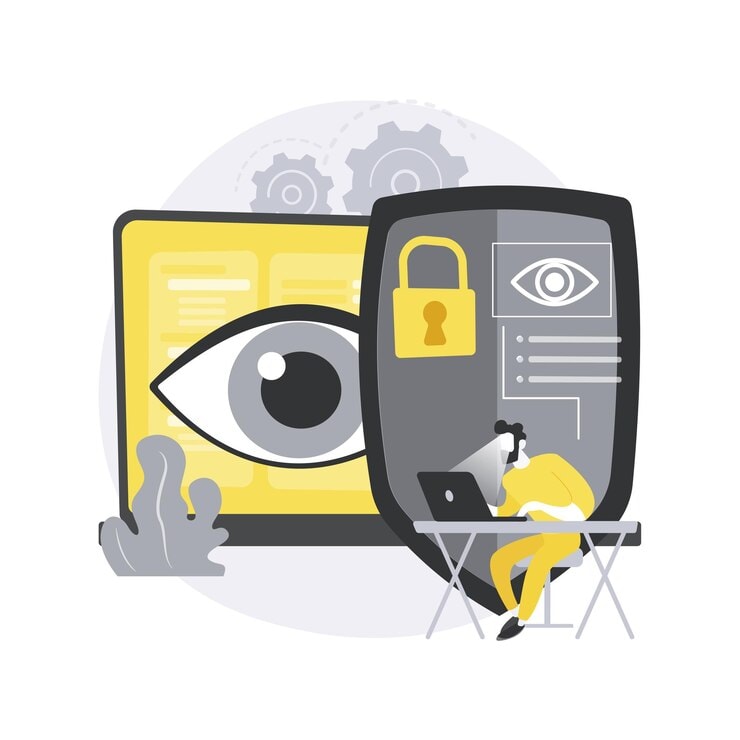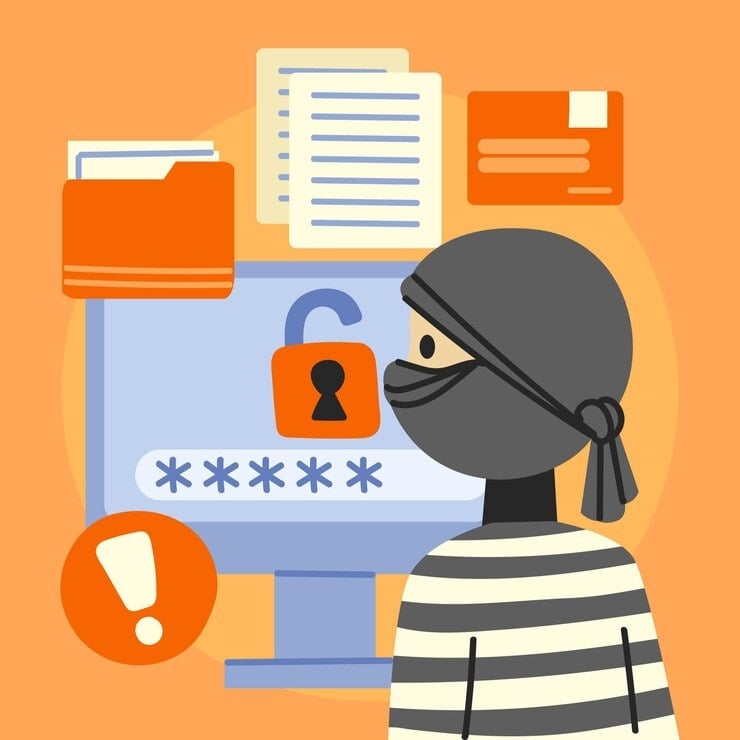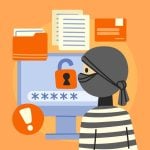Data breaches cost businesses $4.45 million on average in 2023. This number hits small businesses harder – 60% shut down within six months of an attack.
The truth about data security is simple: Most businesses know they need it, but few understand how to implement it correctly. The gap between knowing and doing creates weak points that hackers love to find.
Here’s what makes this serious: Your business holds more sensitive information than you think. Customer details, personally identifiable and personal health information, employee records, financial data, personally identifiable financial information, and trade secrets – all of these need protection. One breach can destroy years of hard work and trust.
But there’s good news. Protection doesn’t require a huge IT team or a massive budget. What you need is a clear, step-by-step approach to data security.
In this guide, we’ll cover practical steps to protect your sensitive personal data and business information. These methods work for businesses of all sizes. They’re tested, proven, and – most importantly – easy to implement starting today.
Lower your delivery costs by 23%
How we reduce costs:
- No delivery vehicle expenses
- Optimized local routes
- Pay-per-delivery model
- Average 23% delivery cost reduction
Data Security Best Practices: Immediate Steps to Protect Information
Spot sensitive data types.
Track where it’s stored and who sees it.
Update software to fix gaps right away.
Conduct a Data Audit
Identify Types of Sensitive Information
First, note down the types of sensitive information your business handles. This might include employee records, biometric data, customer data of racial or ethnic origin and religious or philosophical beliefs, financial information, or proprietary business details. Understanding what constitutes sensitive data is crucial for establishing secure practices. Make a list. This helps prioritize which data sets need the most attention. For instance, health records and financial account details often require stricter controls.
Review your business operations. Talk to different departments to ensure all critical data types are accounted for. Mapping out your data assets gives you a clear picture of what’s at stake.
Determine Where Sensitive Data is Stored and Who Has Access
Find out where this other data subject or data collection of sensitive information is kept. It could be in cloud storage, local servers, or physical files. This is a significant step in understanding potential vulnerabilities. Next, list who currently has access to these data stores.
You can use tools like access logs and audit trails. This not only aids in visibility but also helps in ensuring data integrity. Keeping your access records up-to-date prevents unauthorized access. Regular checks of access permissions are essential.
Implement Multi-Factor Authentication
Use Two or More Verification Steps
To protect sensitive and personal information protection further, employ Multi-Factor Authentication (MFA). MFA requires users to verify their identity using at least two different methods. This could be a combination of something they know (like a password), something they have (like a mobile device), or something they are (biometrics).
The added layer of security significantly reduces the risk of account breaches. 99% of automated cyberattacks are blocked by MFA. This step is an immediate way to bolster your company’s defenses.
Enhance Security for Remote Access
Strengthen security measures for remote work environments by extending MFA. It’s crucial for securing connections from various locations. Remote workers are often targeted as entry points for cybercriminals, so having MFA in place for remote logins is essential.
Deploy secure VPNs in conjunction with MFA. This provides an additional security layer. You should make sure to communicate the importance of using these tools to your remote employees. This step creates a robust defense against unauthorized intrusions.
Update Software Regularly
Apply Software Patches and Updates Promptly
Keeping software up-to-date is vital for protecting sensitive and sensitive personal information too. Software vendors release patches that fix security vulnerabilities. These updates should be applied as soon as available. Quick updates reduce the risk of exposure to known threats.
It is better to set automatic updates where possible. Alternatively, schedule regular times to check for and install updates if automation isn’t available. This practice keeps your system resilient against known exploits.
Address Security Vulnerabilities
Conduct regular assessments to spot software vulnerabilities in your infrastructure. You can use vulnerability management tools to aid in identifying weak spots that need addressing. This proactive approach ensures that you’re not caught off-guard by potential threats.
Create a plan to remediate issues swiftly. This can involve deploying patches or reconfiguring system settings. Staying ahead of potential vulnerabilities is key to maintaining robust data security.
A comprehensive data security approach is a priority given the rising number of intrusion attempts, which reached 11.3 billion in 2023 alone.
By following these best practices, you establish a firm foundation for protecting sensitive and private information immediately.
Implementing Data Encryption: Ensure Safe Communication and Storage
Encrypt stored and transmitted data for security.
Use recognized standards like AES.
Regularly evaluate your encryption methods.
Encrypt data at rest and in transit
Data at rest is information stored on any device or network. Data in transit moves through the internet or private networks. Encrypting data processing is crucial to protecting sensitive information.
Identify where your data exists:
Assess where your data resides. This includes servers, databases, cloud storage, and local devices.
Use an inventory tool to map data across all locations. This helps in knowing what needs protection.
Select fitting encryption tools:
For data at rest, choose encryption software specific to your needs. This can be full disk encryption for laptops or file-level encryption for servers.
For data in transit, use encryption protocols like SSL/TLS for website data and VPNs for remote access.
Encrypt emails and web data:
Use email services that provide end-to-end encryption. This ensures that only intended recipients can read the content.
Implement HTTPS for your website to secure data between your server and client browsers.
Regular encryption audits:
Conduct periodic checks to verify encryption practices are correctly applied. – Update configurations to cover new threats and ensure compliance with standards.
Choose the right encryption standards.
Standards guide best practices in encrypting data securely.
Adopt AES for encryption needs:
AES (Advanced Encryption Standard) is a widely recognized symmetric encryption algorithm. Its use spans across VPNs, WiFi networks, applications, and more. AES uses block ciphers and can work with key sizes of 128, 192, or 256 bits.
AES-256, in particular, offers a high level of security, making brute-force attacks costly and time-consuming. Learn more about it at AES Security.
Stay updated with industry standards and protocols:
Explore current industry guidelines for any changes or updates in encryption protocols.
With cyber threats evolving, keep an eye on advisories from security organizations.
Evaluate and update encryption methods:
Set routine checks to ensure encryption protocols align with business demands.
Evaluate if existing methods still provide enough security or if they require upgrading.
Visual Aid:
Consider including [an infographic about encryption standards] to explain different encryption methods.
Take note of encryption software growth:
The encryption software market is projected to reach $14.32 billion by 2025, highlighting the increasing focus on data security. This trend reinforces the importance of staying informed and utilizing robust encryption practices.
By following these structured steps, businesses can ensure their data, and electronic documents, whether stored or in transit, remain secure against threats. This sets the groundwork for developing a security-focused organizational culture, fostering a conscientious approach to managing sensitive and classified information.
Employee Training for Information Protection: Build a Security-Conscious Culture
Regular training lowers the risk of breaches.
Clear protocols prevent the mishandling of data.
Employees become the first line of defense.
Educate employees about phishing scams.s
Phishing scams trick people into giving away sensitive or personal information. To help employees recognize these attempts and safeguard sensitive information, conduct training sessions regularly. These should be engaging and interactive. You can begin by outlining what phishing is: an attempt to deceive individuals into providing sensitive data. The aim is to help them spot unusual emails or messages that could be harmful.
Schedule training sessions:
Set up a recurring meeting, perhaps monthly. This ensures ongoing awareness.
Use an interactive format. Incorporate quizzes or simulations to make it engaging.
Describe common phishing tactics:
Explain how phishing can come from emails, phone calls, or texts.
Highlight the statistic that 3.4 billion emails a day are phishing attempts. Knowing this can help employees understand why vigilance is crucial.
Share real-world stories:
Use examples where companies faced severe fallout due to phishing attacks. This makes the issue tangible.
Include cases where phishing led to major losses. Explain the results and steps taken afterward.
Provide platforms for learning:
Recommend online courses or videos. These should be accessible to everyone.
Set up a resource library with handouts and booklets for easy reference.
Foster an open communication culture:
Encourage employees to report suspicious emails or actions without fear.
Implement a badge system for quick identification of genuine correspondence.
Boost retention through repetition
Repetition helps in remembering. Regular updates reinforce learning.
Reinforce lessons learned in training.
Send reminders and updates about new threats.
Introduce quick refresher courses as a follow-up.
Establish a clear data handling protocol.
Clear protocols are the backbone of data privacy laws and protection regulations. Detailed guidelines help everyone understand how to handle sensitive information. These rules need to be specific and enforceable. They act as a roadmap, guiding employees on what actions to take with different data types.
Develop comprehensive guidelines:
Define what constitutes sensitive information. Examples include financial details, personal data, or proprietary company information.
Use specific terminology. Terms like encryption, masking, and pseudonymization should be explained for everyone’s understanding.
Build a data classification system:
Assign levels of sensitivity to different data types. Level 1 might be public data, whereas Level 3 could be highly confidential information.
Provide visual representations, like a chart, to show data categories clearly.
Explain the importance of secure data handling:
Emphasize that incorrect handling can lead to breaches.
Communicate the potential impact on business reputation and finances.
Regular policy reviews:
Schedule annual reviews to update protocols. This ensures they remain relevant.
Involve employees in feedback sessions to refine and improve guidelines.
Implement role-based training:
Tailor training content to specific roles. HR personnel may require different instructions than IT staff.
Encourage role-specific drills to test understanding in real-world scenarios.
Ensure ongoing engagement
Keeping engagement high ensures protocols are followed.
Hold quarterly workshops to refresh knowledge.
Use peer training sessions to increase involvement and interest.
With these steps, a national security-conscious culture can be fostered effectively, preparing the organization for any challenges ahead.
Access Control Management Strategies: Restrict and Monitor Data Access
Limit who can see data by setting clear access rules.
Keep an eye on who looks at data and catch issues fast.
These steps stop unauthorized data access.
Implement Role-Based Access Control
Define roles and responsibilities.
You can start by identifying different roles within your organization. Each role should clearly define what responsibilities it carries. This step ensures that each employee knows their area of work and the data they need access to perform their duties. The clearer you are, the easier it is to control data access and collect sensitive information tied to specific roles.
Grant access based on job function.
Assign data access permissions according to these roles. For instance, your HR team might need access to sensitive personal information and employee medical records, but not to financial data. Meanwhile, someone in finance should have the opposite access. You should make sure this process is systematic. Review these permissions regularly. As people change departments or job functions, you should adjust their access rights to maintain security.
Ensure Clear Documentation and Procedures
Maintain detailed records of all assigned data-generated roles and permissions. This documentation helps in audits and in enforcing security policies. Employees should know what data they can access, which reduces the risk of unauthorized access. Create step-by-step procedures to handle changes in roles or data access needs smoothly.
Monitor Access Logs
Regularly review who accesses what data.
Implement systems that record every data access action. These access logs show who accessed which data and when. Set up notifications for unusual access patterns. A spike in data access might indicate unauthorized activity. Regularly examine these logs to ensure everything aligns with your access control policies.
Detect and respond to unauthorized access swiftly.
Create a process for responding to any suspicious activities detected in your logs. Train your team to react quickly to any signs of breaches. Swift actions limit damage from potential data leaks. Consider automated solutions that can flag and even block potential breaches in real time for extra protection.
Establish a Regular Audit Schedule
Set up a regular schedule for auditing access logs. This schedule should fit your organization’s size and data sensitivity. Smaller businesses might conduct monthly audits, while larger enterprises need weekly checks. These audits can help pinpoint potential gaps or lapses in your access control process, leading to stronger data protection.
Restricting who gains unauthorized access to sensitive information is about defining clear roles and continuously monitoring how data is used. By acting on any irregularities immediately and keeping a close watch on access logs and security incidents, you shield your data from unauthorized access while ensuring compliance with internal and external policies.
Importance of Protecting Sensitive Data in Businesses

Data security isn’t a one-time task—it’s part of your business DNA. The steps we covered form a system that protects your company’s sensitive information. But knowledge alone won’t shield your confidential data. Action does.
You should start small: pick one tip from this guide. Maybe it’s setting up multi-factor authentication or training your team about phishing scams. Build from there. Each step strengthens your defense against threats.
The cost of weak security is high. In 2024, the average data breach costs businesses $4.5 million. But strong protection brings benefits beyond avoiding losses. It builds trust with customers, partners, and employees. It shows you value their data privacy. For those looking to enhance their overall business strategies, consider understanding how to manage risks more effectively. Exploring **risk management strategies** can provide valuable insights for safeguarding your business beyond just data security.
Integrating robust data security measures with comprehensive risk management techniques allows businesses to not only protect sensitive information but also anticipate and mitigate various operational threats. Understanding and applying these strategies together creates a resilient framework that supports sustainable growth and resilience in an ever-evolving cyber landscape.
Remember: security is a team effort. Share these practices with your staff. You can make general data protection regulation part of your company culture. Test your defenses regularly. Stay informed about new threats.














